Building of the Day: 168 Hancock Street
Brooklyn, one building at a time. Name: Row house Address: 168 Hancock Street Cross Streets: Nostrand and Marcy Avenues Neighborhood: Bedford Stuyvesant Year Built: 1881, addition added 1890s Architectural Style: Neo-Grec Architect: M. J. Morrill, addition by Montrose Morris Other Work by Architect: Morrill-houses on Berkeley Place, Park Slope, also Prospect Heights; Morris-houses in Bed…
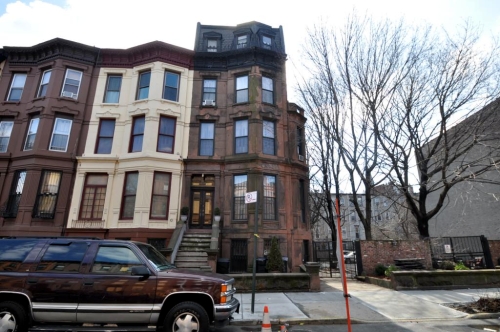
Brooklyn, one building at a time.
Name: Row house
Address: 168 Hancock Street
Cross Streets: Nostrand and Marcy Avenues
Neighborhood: Bedford Stuyvesant
Year Built: 1881, addition added 1890s
Architectural Style: Neo-Grec
Architect: M. J. Morrill, addition by Montrose Morris
Other Work by Architect: Morrill-houses on Berkeley Place, Park Slope, also Prospect Heights; Morris-houses in Bed Stuy, Clinton Hill, Crown Heights North, Arlington, Alhambra, Roanoke, Imperial, Renaissance Apartment buildings, among other buildings.
Landmarked: Almost. Part of soon to be designated Bedford Historic District.
The story: This house has a connection to the first Dutch settlers in Brooklyn, a prominent real estate auctioneer, a famous Brooklyn architect and a mysterious tie to prohibition. All of this is wrapped up in a very large house with a very large yard on one of the most prominent streets in Bedford Stuyvesant.
The house is one of a group of three Neo-Grec style, four-story brownstones designed by M.J. Morrill for developer H. A. Weed. Morrill, who designed brownstones and other buildings in several brownstone neighborhoods, used his signature “v” shaped bays, creating something a bit unusual for a block soon to be filled with eclectic homes. This house is different from the others because it includes a double lot of land adjacent to the house, which has boundaries that stretch behind the five houses to the east of this house, giving the owner a great deal of land.
The first owner of the house was the Jeremiah (Jere) Johnson family. If you are a devotee of Brooklyn’s architectural history, you’ve run across the Johnson name often. Jere Johnson was the owner of Brooklyn’s largest real estate auction house. There are literally thousands of ads in the Eagle announcing auctions of property and sometimes the contents of estates from 1872 until 1902 when digitization of the paper stops.
He also had quite a Brooklyn heritage and pedigree. Jere Johnson was the direct descendent of Sarah Rapelje, the first white child born in New Netherlands in the Wallabout in 1625. His Dutch roots continued, with Remsens, Vandervoorts and other familiar Dutch names in the family tree until marriage into the Johnson family, an early English family in Brooklyn.
His great-grandfather was an officer in the Revolutionary War, in the Kings County Militia. His grandfather was General Jeremiah Johnson who commanded Fort Greene in the War of 1812 and was three-time mayor of Brooklyn. Jere Johnson was one of the founders and president of the Brooklyn Real Estate Exchange and made a huge fortune not only in his auction business, but by buying and selling large parcels of land for development, mostly in Flatbush.
In the early 1890s, Johnson hired prominent Brooklyn architect and neighbor, Montrose Morris, to add more room to the house. Morris added the fifth floor, with its mansard roof, as well as a large multi-floored extension to the back of the house. The family, which included three sons and three daughters, needed the room. There are accounts in the Eagle of them having events in their spacious garden grounds as well as in the house.
In 1896 tragedy befell the home when one of the sons, 22 year old Frank H., died a week after graduating from Johns Hopkins University. He and a friend took the family boat out for a sail on Long Island Sound and it overturned, drowning both of them. In 1898, Jere Johnson died while convalescing in Georgia. His wife accompanied the body as it was returned to Brooklyn, and the funeral took place in the house. The service was led by Dr. Meredith, the famous pastor of nearby Tompkins Avenue Congregational Church, of which Johnson was an active member. He is buried in Green-Wood Cemetery.
The house was lived in by the family for many more years, and the business was taken over by Remsen Johnson, the eldest son, who changed the name to Jere Johnson, Jr. Co. But by 1923, the house was for sale. It almost became the property of a private sanitarium called the DeWitt Sanitarium, which had plans to house maternity cases in the house, but neighborhood sentiment was so against it that the plans were dropped. The neighbors might not have celebrated for very long. Or perhaps they did!
Whoever bought the house next adds the last mystery. Local lore has it that the house became a speak-easy during Prohibition. There was said to be an underground tunnel that led from the house, under the large lot next door, and over to Nostrand Avenue, where supplies of bootleg alcohol were passed into the house. The current owners of the house have not found any definitive evidence, except this: in the cellar, the foundation of the house is rubble and stacked stone. But one side of the house has a bricked up entryway that doesn’t make any sense, construction-wise. It could be the long-lost entrance to the bootlegger’s tunnel. Hmmm. It’s a great story, part of the impressive history of this impressive property. GMAP
(Photograph: Christopher Bride for Property Shark, 2012)
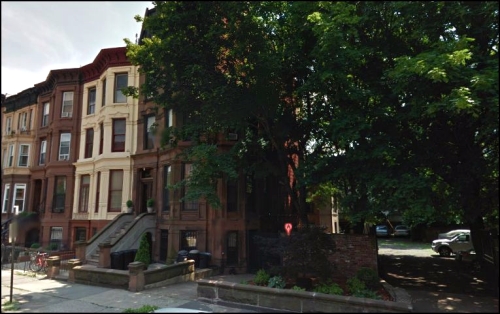
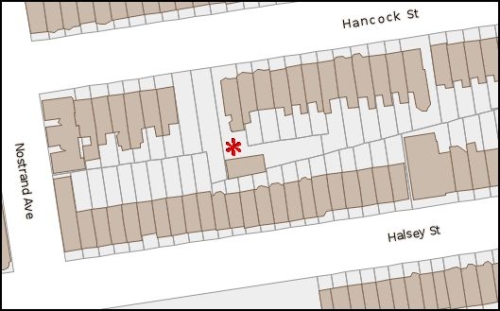
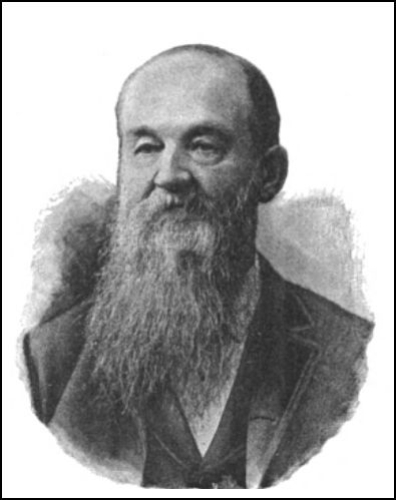

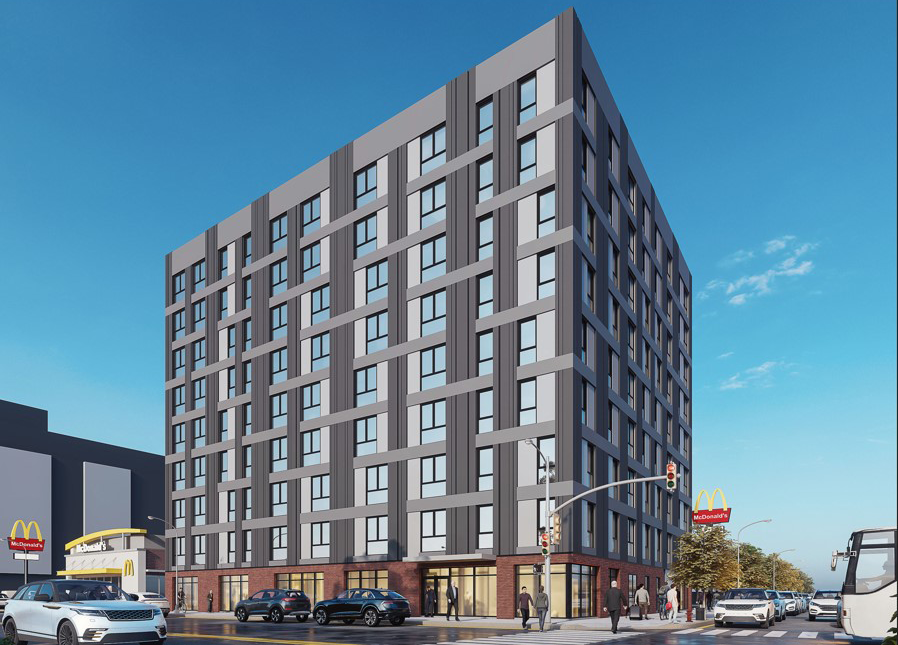
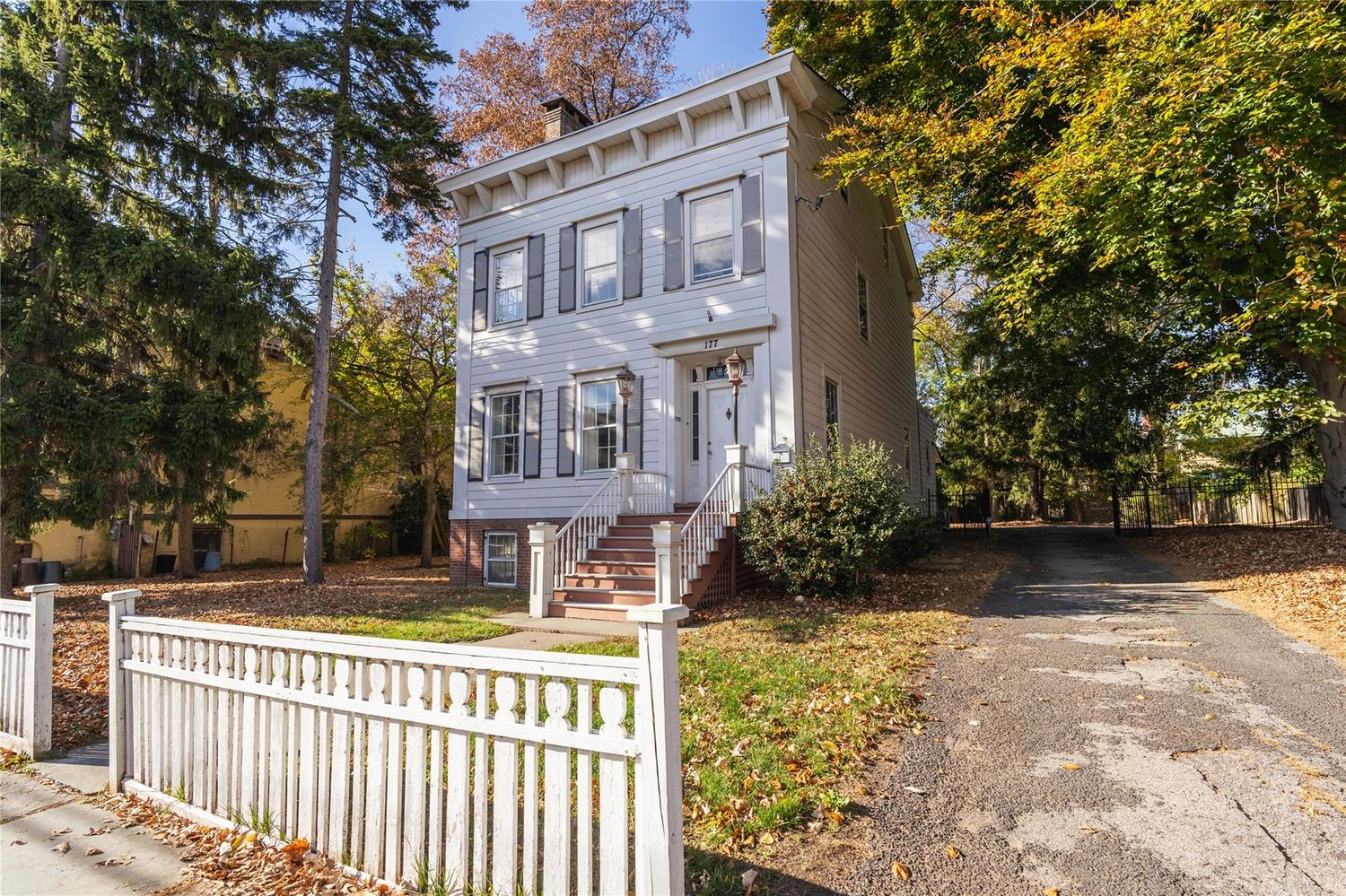





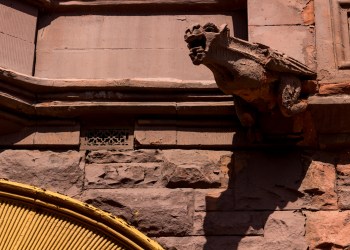
I was at this house today and the house and the garden are MASSIVE!!!
Why is the backyard of this house an L. It cuts into the yards of several other homes.
I love, love, love the little collection of miscellaneous treasures planted in the lot on the other side of the driveway. Always worth a look when I pass by.